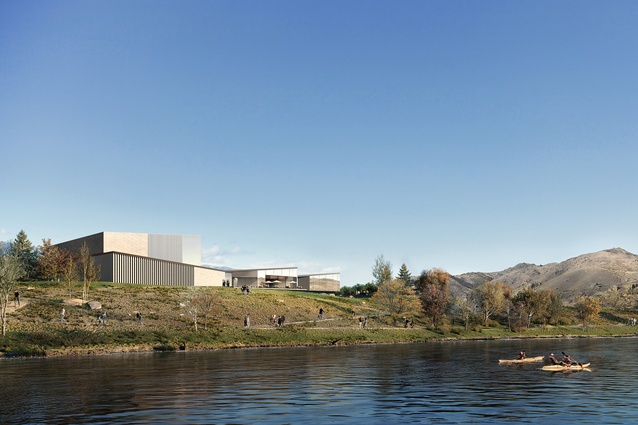Celebrating Cromwell’s rich history
Jasmax’s 3000m2 Cromwell Memorial Hall, Museum and Events Centre, overlooking Lake Dunstan and the Kawarau River in Central Otago, is 13 months into construction and due for completion in May 2026.
A replacement for the Central Otago District Council’s aging 60-year-old hall on the same site, the centre will feature a 400-seat auditorium space alongside a new museum, a 40-seat cinema, a café, and retail, community and event spaces. A memorial commemorating the fallen from last century’s two world wars will be retained and relocated to the new building’s entry within a new Memorial Garden.
Jasmax lead architect Chris Jack says the design team has worked in collaboration with local practice SA Studio on the project, to ensure the spaces accommodate the wide variety of community requirements. “Design principles of connectivity, flexibility and adaptability will support the longevity of the centre as a vital cultural heart, ensuring it remains a valued asset that will meet the community’s needs for years to come.”
Jack says the architects have worked in partnership with Kāi Tahu consultancy Aukaha to ensure the design reflects the identity, history, values and narratives of mana whenua.
“The building is designed for resilience, with low-damage seismic design to key elements,” says Jack. “Rainwater will be collected and reused in the surrounding gardens and a warm roof will maintain comfort year-round and also help reduce environmental noise in the main performance areas.”
Materials from the old hall have been salvaged and reused in the new building, with some gifted to local community groups.
Built by local returned servicemen and the wider community, the previous hall served as inspiration to maximise ‘local’ in the new construction, says Jack. “Through procurement and construction, led by Naylor Love, maximising local subcontractor involvement and sourcing materials nearby has been a core focus.” This commitment is evident in the pre-cast panels, made and delivered from less than 3km away, and the brick cladding sourced from Alexandra, utilising repurposed aggregate from local goldmine tailings and the Clyde Dam.











